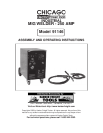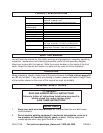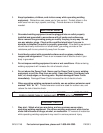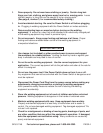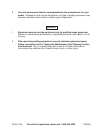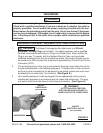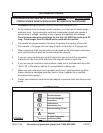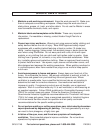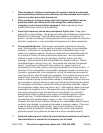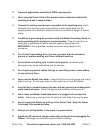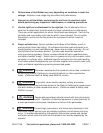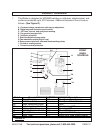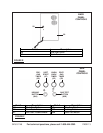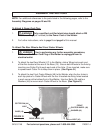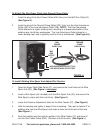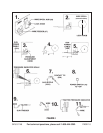
SKU 91146 For technical questions, please call 1-800-444-3353. PAGE 8
SPECIFIC SAFETY RULES
1. Maintain a safe working environment. Keep the work area well lit. Make sure
there is adequate surrounding workspace. Always keep the work area free of
obstructions, grease, oil, trash, and other debris. Do not use the Welder in areas
near flammable chemicals, dusts, and vapors.
2. Maintain labels and nameplates on the Welder. These carry important
information. If unreadable or missing, contact Harbor Freight Tools for a
replacement.
3. Prevent eye injury and burns. Wearing and using personal safety clothing and
safety devices reduce the risk of injury. Wear ANSI approved safety impact
eyeglasses with a welding helmet featuring at least a number 10 shade lens
rating. Leather leggings, rubber soled, fire resistant shoes or boots should be
worn when using this Welder. Do not wear pants with cuffs, shirts with open
pockets, or any clothing that can catch and hold molten metal or sparks. Keep
clothing free of grease, oil, solvents, or any other flammable substances. Wear
dry, insulating gloves and protective clothing. Wear an approved head covering
to protect head and neck. Use aprons, cape, sleeves and shoulder covers, and
bibs designed and approved for welding procedures. When welding overhead or
in confined spaces, wear flame resistant ear plugs or ear muffs to keep sparks
out of ears.
4. Avoid overexposure to fumes and gases. Always keep your head out of the
fumes. Do not breathe the fumes. Use enough ventilation or exhaust, or both, to
keep fumes and gases from your breathing zone and general area. Where
ventilation is questionable, have a qualified technician take an air sampling to
determine the need for corrective measures. Use mechanical ventilation to
improve air quality. If engineering controls are not feasible, use an approved
respirator. Work in a confined area only if it is well ventilated, or while wearing an
air-supplied respirator. Follow OSHA guidelines for
Permissible Exposure Limits
(PEL’s) for various fumes and gases. Follow the American Conference of
Governmental Industrial Hygienists recommendations for
Threshold Limit Values
(TLV’s) for fumes and gases. Have a recognized specialist in Industrial Hygiene
or Environmental Services check the operation and air quality and make
recommendations for the specific welding situation.
5. Do not perform welding or cutting operations near chlorinated hydrocarbon
vapors produced by degreasing or painting. The heat generated by arc rays
can react to form phosgene, a highly toxic gas.
6. Irritation of the eyes, nose, and throat are symptoms of inadequate
ventilation. Take immediate steps to improve ventilation. Do not continue
operations if symptoms persist.



